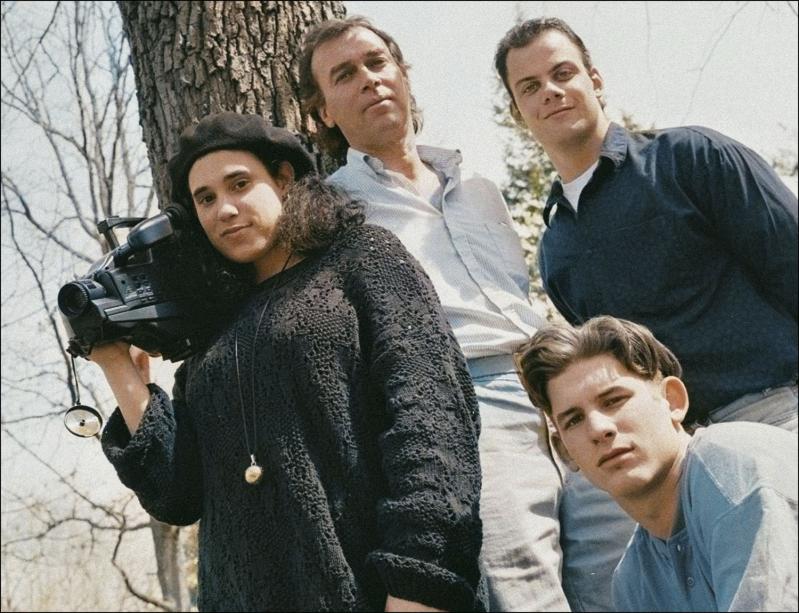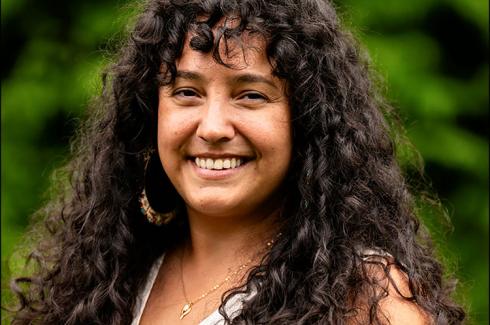In the early ’90s, a group of high school students and an English teacher in Middletown, N.Y., used video cameras to investigate what proved to be three polluted landfills in Orange County. Their efforts culminated in 1997 with “Gangsters, Garbage, and Greed,” a persuasive hourlong documentary that exposed a serious environmental catastrophe involving the Ford Motor Company, the Genovese crime family, widespread illegal dumping, and the failure of local politicians and the editor of the local newspaper to take it seriously.
For almost 30 years, that seemed to be the end of the story — until 2020, when The Guardian published an extensive article about Fred Isseks, a by-then-retired English teacher, and Electronic English, the course he’d created to support his conviction that “You learn by getting involved.”
That article caught the eye of Amanda McBaine and Jesse Moss, documentary filmmakers whose awards have included Emmys and the Sundance Grand Jury Prize. “We just connected with this story,” said Mr. Moss. “We didn’t know if there was a documentary. I had a really transformative high school journalism class, so we reached out to Fred and he was really receptive to the idea of a film. He just has this kind of spirit, and we loved that.”
What Mr. Isseks also had was a basement full of all the video his students had shot over a six-year period. He’d also had the smarts to digitize the VHS tapes before they began to degrade.
After those first conversations, Covid happened, and it took the filmmakers time to piece together the financing for the film. Once the project took off, however, it came together pretty quickly.
The result is “Middletown,” a feature documentary that will be shown at Guild Hall on Friday at 7 p.m. as the concluding program in the HamptonsFilm SummerDocs series. After the screening, the filmmakers will sit down with Mr. Isseks, Jeff Dutemple, one of the original students involved, Alec Baldwin, HamptonsFilm’s co-chairman, and David Nugent, its artistic director.
Middletown is a working-class town located about 70 miles northwest of Manhattan. Mr. Isseks graduated from its high school in 1966 and went on to become an English teacher there. Before the video venture, he applied for a grant to get Instamatic cameras for his students to use to take photographs of the town. When video cameras became available, the school district gave them to Mr. Isseks. Electronic English was born.
A sophisticated video studio was set up in a large classroom. The class needed an assignment, and when Mr. Isseks first mentioned the toxic Wallkill landfill, there wasn’t much interest. But once the students visited the site and saw bubbling, discolored water they were hooked. Over the course of the film we see hundreds of barrels of toxic waste, a green pond, even toxic water in private homes.
“Middletown” was assembled from a vast treasure trove of footage shot by the students — what Ms. McBaine called “sort of a ball of spaghetti, so many characters” — but the edited result not only makes the case for what should have been urgent remediation, it does so rivetingly.
What adds an absorbing dimension to the film is the give-and-take between Mr. Isseks and four of the original team of students, who reflect on their experience as teenaged muckrakers. The high school’s original studio was dismantled long ago, but the filmmakers, working from Mr. Isseks’s sketches, recreated it in Los Angeles.
“A classroom is just a box,” Mr. Moss said. “It comes to life with the students, the teacher, the creation of intellectual curiosity. When the kids all came back together into the fake classroom, we just stepped back and they just began to inhabit the space like it was their old classroom. It was like Fred was teaching again, and he was interacting with his students — but they were in their fifties!”
“Fred’s notion of civic courage is something he spoke with me about when we first talked to him,” Mr. Moss said. “Particularly at this moment, when we’re all pulling our hair out, finding a story of hope and optimism, of resilience and defiance, is especially inspiring. For us, it’s about making intentional choices about what we do and telling stories we think are honest and sometimes painful, but have something meaningful to contribute.”
The film premiered at Sundance in January. Mr. Isseks and the students were not only there, but have continued to travel with the film. It will be shown in Middletown in the fall.




